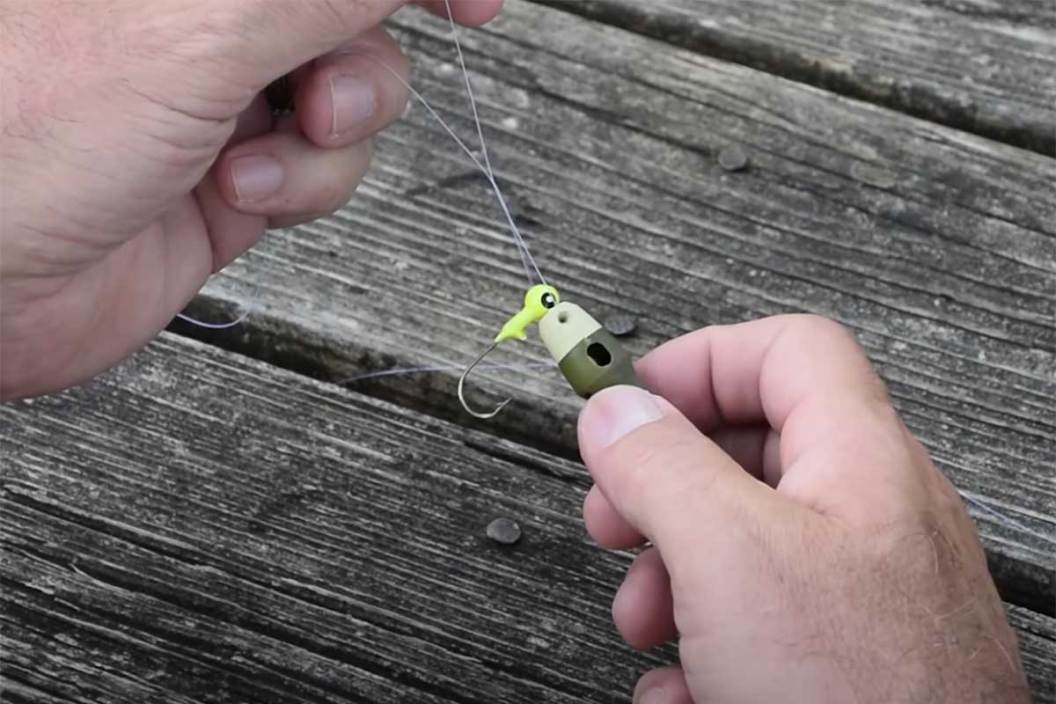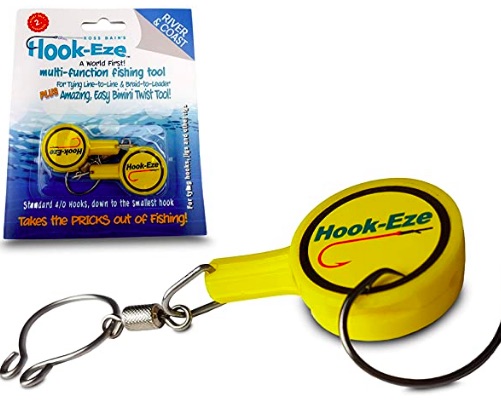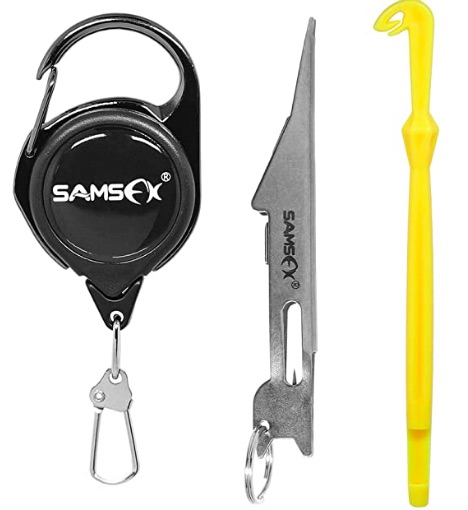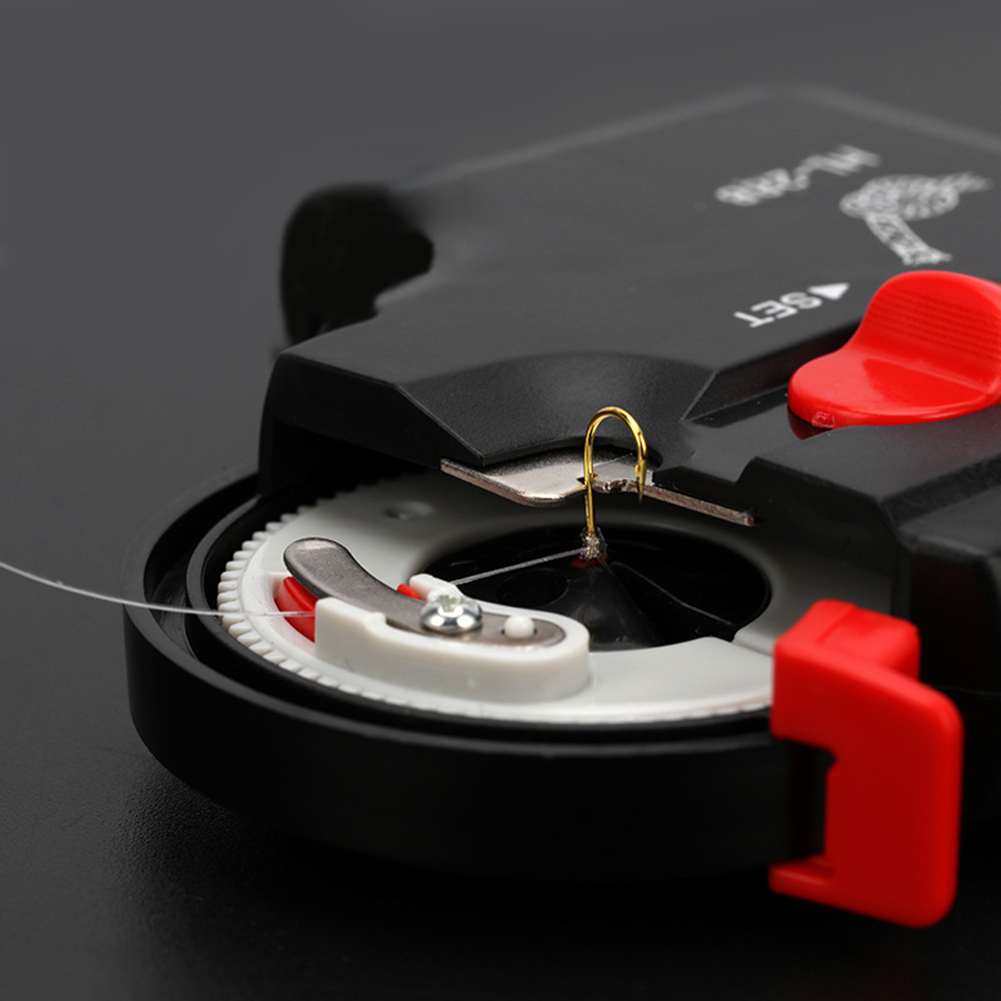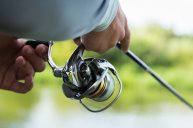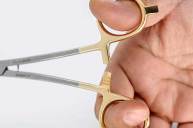Here's what you need to know before you go out and buy a fishing knot tying tool.
The idea of a fishing knot tying tool invokes a few different thoughts from anglers. First, what is it exactly, and what does it actually do? And, of course, do I even need one? They're all good questions for those considering such a device for their tackle box.
Let's take a look at what they are made of, what kinds of knots they can tie, and which if any are the best of the bunch. Did you know that there is even an electric version?
In fact, there are so many fishing knots that only a few folks out there anywhere know how to tie them all. There is also the case of those who can still actively go fishing, but may have a less than dexterous use of their hands and fingers anymore. It's important that these veteran anglers can still get out there without worrying about losing a good fish to a bad knot.
First, let's examine a few of the most common fishing knots, then we'll see if any one knot tying tool can tie them all. Berkley Fishing provides a great look at how to tie them on their YouTube Channel.
Palomar Knot
Ever since this one was invented, fishermen everywhere have been enthralled by its performance in the field. It's about as simple as it gets to tie, but that said, not everyone has the dexterity to do so.
Uni Knot
Also known as the Hangman's knot, the uni knot is great for tying monofilament line to a hook or the spool of your reel, and for connecting to leader material.
Surgeon's Knot
The surgeon's knot is used for tying together two lines of either equal or differing sizes and keeping them together. Many folks have tried this knot out on their own to great success for many years.
Improved Clinch Knot
This is one of the most common and well known knots that anglers have been using for many years. Can be used with multiple types of lines to tie up with hooks, swivels, and even directly to lures.
Trilene Knot
Another knot that is well known to fishermen is the venerable Trilene knot which is a great, simple knot for use with monofilament or fluorocarbon lines to tie directly to lures or swivels.
What Fishing Knot Tying Tools Are Available?
Sure, those mentioned aren't all of the fishing knots that we know of, but they're definitely the most common. What we need to find out now is how much assistance we can benefit from with a fishing knot tying tool.
It should be said right away that all of the knot tying tools comes with some kind of learning curve before their use is fully understood by each fisherman.
Not only that, but each tool has its own unique way of tying the knots, albeit with the same end result. Interestingly, there are so many knot tying tools out there for fishermen to choose from, but many of them look almost nothing alike.
For those of us whose eyes need a little help, keeping a cheap pair of readers in the fishing kit is also an essential item, no matter what tools you are using.
Let's look at a few of the most popular knot tying tools and find out what they can do.
HOOK-EZE Fishing Gear Knot Tying Tool
The HOOK-EZE seems to top the list of most-known knot tying tools. At $12.99 you may think that it's a bit expensive, but it's safe, consistent, and durable.
It is easy and convenient to use and comes with a stainless steel line cutter to boot. It may seem a bit lightweight for the price you pay, but it can make tie a good assortment of knots and is good for both freshwater and saltwater fishermen with a variety of line types and sizes.
TYEPRO Fishing Knot Tying Tool
TYEPRO is one of the brands that caters to those whose hands and fingers need a little more assistance though the tool's spring-loaded gripping power. Having said that, it ties many of the basic knots and a few more specialized ones. The main drawback of this tool is that it works well for smaller jigs and hooks, but not so much for the larger versions of these items.
It's also pretty expensive at $18.99, but comes with a lanyard for easy access and safekeeping.
SAMSFX Fishing Quick Knot-Tying Tool
Said to be the Swiss Army knife of fishing, this knot tying tool does a lot. It's made with a sturdy stainless steel and comes with specific instructions on how to use to tie a range fishing knots, including some of the most difficult. The retractor keeps it within arm's reach at all times.
The downside is that there is a big learning curve to get used to it, but it is one of the least expensive models at $8.99.
Julam Electric Fishing Hook Tying Device
Though we can't speak from experience, this foreign-made device looks as though it's plenty capable of doing the job mechanically. The specifications claim it will work with a wide range of hook sizes, and can create knots equally as strong and sturdy as hand tying can. Are you willing to give up your knot tying to the robots? Okay, it isn't that extreme, but this could certainly come in handy for a lot of anglers. A price of $16.22 might raise eyebrows, but that seems fair if it delivers on its promise.
Do You Need a Fishing Knot Tying Tool?
It's true: fishing knot tying tools may not be for everyone. But even if you don't need one, it could still award an advantage. Those with younger eyes and a good amount of their dexterity in their hands and fingers can get good use out of them, and young anglers just starting out will get assistance in one area that can cause issues for beginners.
For those who fish for a living, like charter boat captains or outfitters with many rigs to tie, a tool like one of these can be the difference between keeping up with your rigs and going crazy trying trying to find a hook eye with a line.
One of the best reasons to buy a decent knot tying tool is simply to learn how to tie some of the most specific and difficult knots that some veteran anglers know by heart.
Fly fishermen have been using specified knot tyers for many years to make sure that their fly fishing line is well attached to their leader and tippet. There are also tools for tying sophisticated knots like the blood knot and the nail knot, plus combo tools to tie knots in multiple ways.
This type of fishing gear can aid those with poor eyesight in tying hooks and threading eyes, but the basic tools can rarely help with snell hooks or advanced knot techniques.
Two additional items to always have at hand while fishing are line clippers and a hook sharpener, but not all knotters have these. It can also matter what species that you're targeting, since pursuits like walleye fishing and bass fishing don't always use the same knot styles.
You may eventually realize that having a good quality knot tyer will make all the difference, since knot-tying tools for fishing can make quick work out of the most dreaded parts of angling. In the simplest terms, a knot tying tool can make your fishing life a little easier.
In general, it's best to always try to learn how to do the hunting and fishing basics without the help of advanced tools, and tying fishing knots is no different. You aren't always going to have a tool handy to give you that extra advantage, so learn how to tie each knot with just your fingers first. But, once you have developed a good sense of muscle memory, go ahead and invest in one of these tools that will save you time and energy you could be spending on catching fish!
Work smarter, not harder!
Looking for a little more or even hot lunch for your hunting blind? Follow my webpage, or on Facebook and YouTube.
NEXT: GEAR REVIEW: TACTICA M.100 MULTITOOL GADGET
